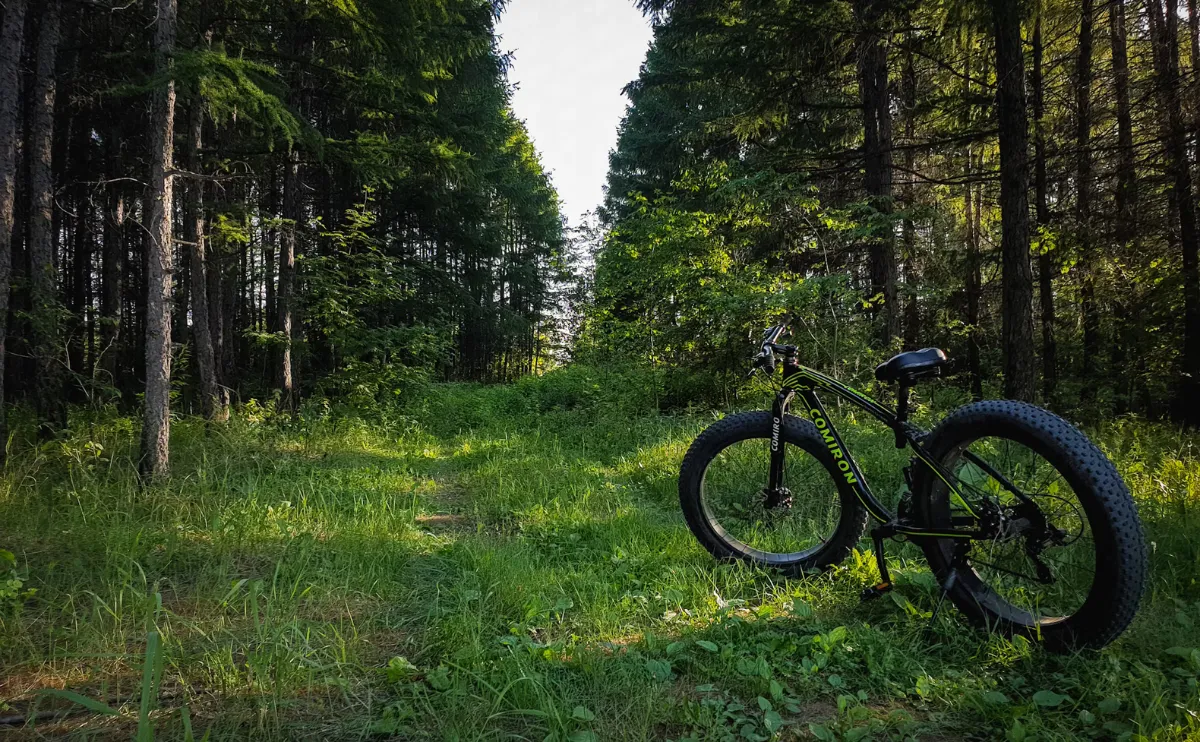How Fatbikes Handle Snow, Sand, and Extreme Terrains
Fatbikes, with their oversized tires, are specifically designed to tackle the most challenging terrains, including snow, sand, and other extreme surfaces. Their unique build gives them a significant advantage in conditions where standard bikes struggle. Here’s how fatbikes perform on these tough terrains and why they are a go-to choice for adventurers seeking to explore more rugged environments.
1. Snow: Conquering Winter Terrain
Fatbikes are particularly known for their ability to handle snowy trails. The large, wide tires provide increased surface contact, which helps distribute the rider’s weight more evenly across the snow. This prevents the bike from sinking into soft snow, allowing for smoother and more stable rides, even in deep, powdery snow.
- Low Tire Pressure: Fatbike tires are typically run at lower pressures than traditional bikes, which increases the tire’s footprint. This helps in creating better traction on slippery snow, allowing riders to keep a steady pace without losing control.
- Stability: With a lower center of gravity and wider tires, fatbikes offer enhanced stability, making them easier to control in snow and icy conditions, especially when riding on trails or packed snow.
2. Sand: Gliding Over the Dunes
Sand is another terrain where fatbikes truly shine. Whether it’s sandy beaches or desert dunes, the wide tires excel at staying afloat on soft surfaces. A fatbike’s ability to stay on top of the sand rather than sinking into it is a game-changer for riders looking to explore coastal areas or arid regions.
- Increased Floatation: The fatbike’s tires act like flotation devices on sand. They spread the rider’s weight over a larger surface area, minimizing sinking into the loose, shifting sand.
- Enhanced Traction: Just like with snow, the wide tires provide excellent grip on loose, soft surfaces, allowing riders to power through sandy trails or beaches without getting stuck.
3. Extreme Terrains: Navigating Rugged Trails
Fatbikes are built to handle a variety of extreme terrains beyond just snow and sand. The durability and design of the bike make it a reliable choice for those tackling rocky, muddy, or uneven trails.
- Rocky Trails: The large tires offer additional shock absorption, which reduces the impact of rocky terrain. This makes the ride much more comfortable and manageable compared to standard mountain bikes, which may struggle with stability on rough paths.
- Mud and Wet Conditions: Fatbikes’ wide tires excel in wet, muddy conditions. The larger surface area prevents the bike from getting bogged down in soft mud, giving it the ability to float over soggy paths without losing momentum.
4. Overall Performance: Stability, Comfort, and Control
What sets fatbikes apart from regular mountain bikes is their overall performance on extreme terrains. They are designed to maintain stability, comfort, and control on soft, loose, and uneven surfaces. Whether you’re riding through deep snow, across shifting sand dunes, or over rocky mountain trails, fatbikes allow you to ride confidently with minimal effort.
- Comfort: The extra-wide tires not only provide superior traction but also act as natural shock absorbers, offering a more comfortable ride over bumpy or uneven surfaces.
- Durability: Fatbikes are designed with heavy-duty frames and components to withstand the added stress of extreme terrains. This makes them ideal for long-distance rides in harsh conditions.
Conclusion: The Ultimate Terrain-Conquering Bike
Fatbikes are purpose-built for handling extreme terrains like snow, sand, and rugged trails. Their wide tires and sturdy build give riders the ability to navigate tough conditions with ease and confidence. Whether you’re exploring snowy landscapes, riding along sandy beaches, or tackling rough mountain trails, a fatbike can take you where other bikes can’t. For adventurers seeking to ride in all seasons and on all terrains, fatbikes are the ultimate tool for the job.
